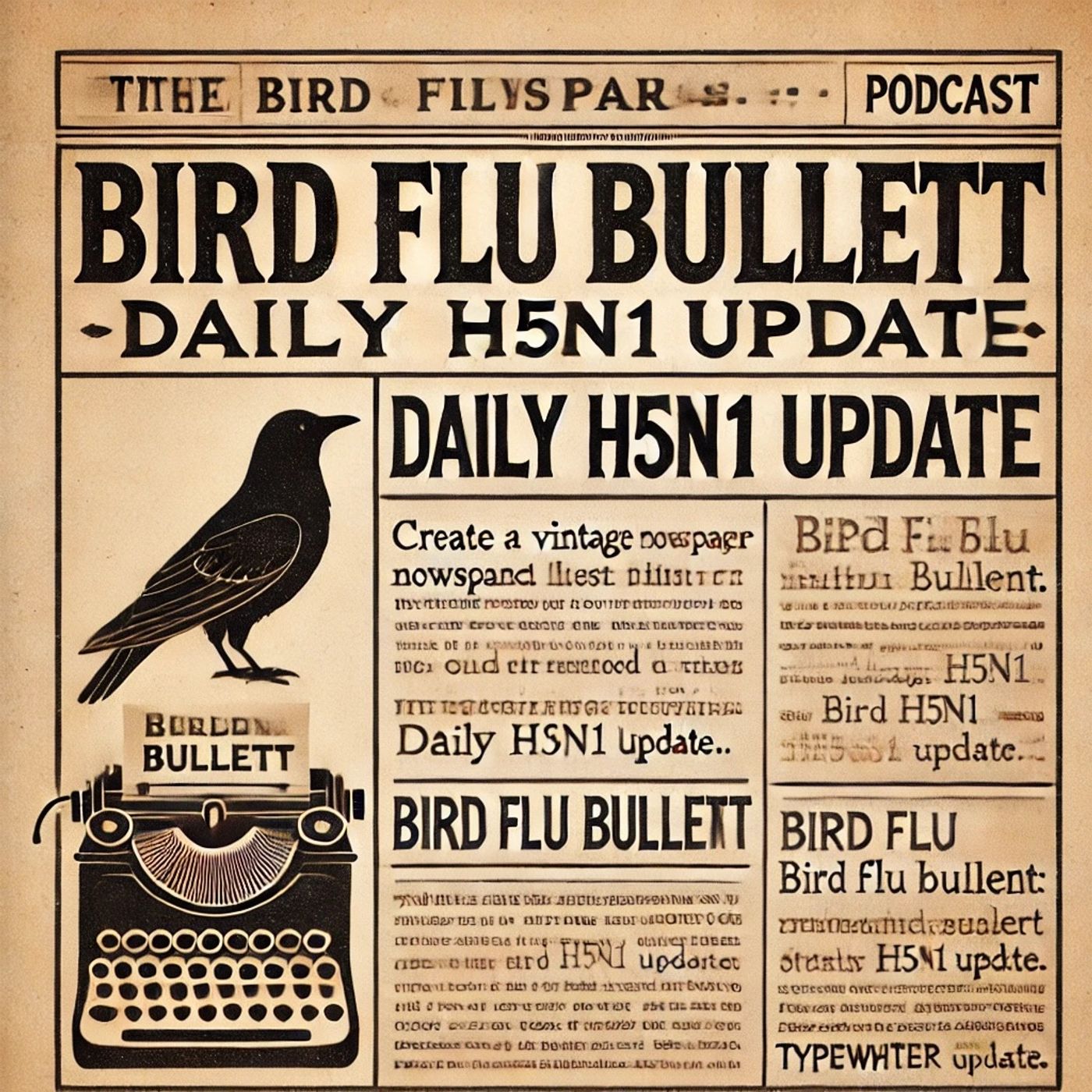Podcast Episode Details
Back to Podcast Episodes
H5N1 Bird Flu Spreads in Cambodia with New Human Case While US Monitors Dairy Cattle and Poultry Outbreaks
This is Bird Flu Bulletin: Daily H5N1 Update for Monday, August 4, 2025.
Top stories today
First, in Cambodia, the Ministry of Health has announced an additional confirmed human H5N1 case, a poultry market worker in Kampong Cham. This brings the country’s total to 12 lab-confirmed cases this year, up from 11 yesterday. Six deaths have been reported among these, matching the high case fatality ratio previously highlighted by the World Health Organization. Cambodian authorities are intensifying their market disinfection programs and boosting household surveillance.
Second, the United States continues to monitor H5N1 among dairy cattle and poultry flocks. The CDC reports three new poultry farm outbreaks in Minnesota over the weekend, though no new human cases have been identified. The national tally of human infections tied to farm work remains at 41, with no severe cases or evidence of human-to-human transmission so far. The public health risk remains low, according to the CDC, but biosecurity protocols have been reinforced in the affected regions.
Third, international surveillance has detected additional clusters of H5N1 in wild and captive birds. Japan confirmed the presence of the virus in sea otters off Hokkaido, while Belgium reported H5N1 among domestic cats at a poultry facility. The Food and Agriculture Organization and World Organisation for Animal Health emphasize that while the overall global risk to the public remains low, it remains higher for those with occupational or frequent animal exposure.
Over the past 24 hours, global human case numbers rose by one, solely due to the new Cambodian infection. Animal outbreaks, mostly limited to poultry and wild bird populations, increased by six this week, with the bulk in Asia and North America.
New guidance from the CDC this afternoon reiterates existing advice for those handling sick or dead birds: wear personal protective equipment such as gloves, masks, and eye protection. The CDC stresses there is currently no evidence of sustained human-to-human spread. Meanwhile, the WHO advises all countries to intensify monitoring in live bird markets and among symptomatic individuals in contact with birds.
We were able to speak briefly with Dr. Angela Rios, a veterinary epidemiologist at the Food and Agriculture Organization, about current risks.
Dr. Rios: “For the general public, risk is very low. The greatest risk continues to be among those with direct, unprotected exposure to infected animals, especially in regions with poor hygiene controls. Countries must maintain vigilance and report all suspect cases rapidly.”
Looking ahead, several important surveillance reports are expected tomorrow from the European Centre for Disease Prevention and Control, which could offer updated analysis of virus spread in migratory bird populations. Additionally, the United States Department of Agriculture is set to release its monthly summary on H5N1 activity among commercial flocks.
Thank you for tuning in to Bird Flu Bulletin: Daily H5N1 Update. Come back next week for more on the evolving story of avian flu and its impact on global health. This has been a Quiet Please production. For more, check out QuietPlease.ai.
For more http://www.quietplease.ai
Get the best deals https://amzn.to/3ODvOta
Published on 2 weeks, 5 days ago